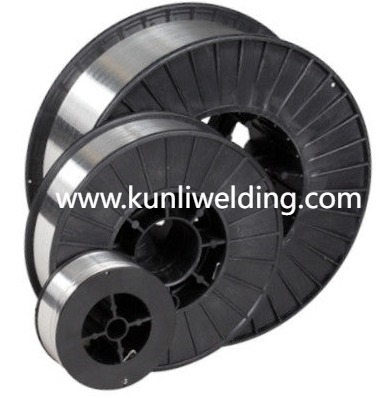Kunliwelding approaches to supplying welding wire that supports assembly efficiency

As electric vehicle programs expand across global assembly lines, many supply teams now ask how Aluminum Welding Wire Manufacturers will respond to shifting demands for lighter structures and efficient joining methods. Procurement and fabrication leaders are watching how wire supply and handling choices affect assembly speed and product longevity.
Demand is driven by design directions that favor weight reduction and refined thermal management. When vehicle architects specify aluminum parts for body and enclosure work the welding consumable becomes a practical lever that influences distortion control finish readiness and repair paths. Shops that tune feeding practices and joint fit up tend to see fewer interruptions and more consistent appearance on visible panels.
Recent episodes of supply disruption have shown how sensitive assembly schedules can be to raw material flows and production continuity. That pressure has pushed buyers to value suppliers who publish handling guidance offer steady packaging options and provide trial samples so teams can qualify product quickly without risking long pauses on the line. Reliable documentation and responsive technical support reduce the hidden costs of onboarding a new wire.
On the shop floor practicalities matter. Wire that feeds cleanly through automatic rigs and that yields predictable bead shape lowers the burden on finishing stations. When welding teams pair consistent consumables with controlled travel technique they reduce the need for rework and help parts move smoothly to surface treatment. Such operational gains often outweigh unit price differences when measured across a production run.
Sustainability and repairability are part of modern procurement discussions. Manufacturers are looking for materials that support repair friendly assemblies and that do not force early replacement of components. Choosing wires with clear handling notes and that integrate with existing recycling flows helps engineering and procurement meet wider company goals without adding complexity to daily operations.
For teams that handle model updates and frequent process changes a simple validation routine helps. Run a short shop trial with representative panels verify feed compatibility and check finished surface readiness for coating or other treatments. Document the feed path spool handling and storage so that each lot can be traced and any variation is easier to diagnose. These small steps reduce surprises when volumes change or when a new design moves from prototype to routine assembly.
Partnership with a supplier that offers clear product notes practical packaging and accessible samples speeds qualification and reduces downtime. Fabricators benefit when a supplier explains recommended handling practices and helps match wire choices to assembly techniques. That collaborative approach makes it simpler to keep production moving while protecting fit finish and serviceability.
Electric vehicle programs are reshaping how materials and consumables are sourced and managed across supply chains. By pairing process adjustments with informed supplier selection, manufacturers can reduce operational risk and support cleaner finished products. To review product options handling guidance and packaging choices visit the supplier pages at www.kunliwelding.com .
- News & Current Events
- Arts & Culture
- Causes
- Technology & Gadgets
- DIY & Crafts
- Business & Finance
- Dance
- Travel & Leisure
- Drinks
- Lifestyle
- Film
- Fashion & Beauty
- Home & Gardening
- Fitness
- Education & Learning
- Food & Cooking
- Games
- Science & Environment
- Gardening
- Entertainment
- Health & Wellness
- Personal Development
- Home
- Motivation
- Literature
- Music
- Parenting & Family
- Networking
- History & Philosophy
- Other
- Automotive
- Party
- Opinion & Commentary
- Religion
- Shopping
- Sports
- Theater
- Wellness
- Trends


